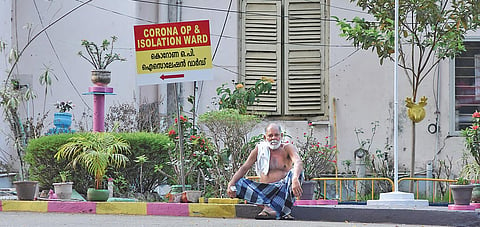

THIRUVANANTHAPURAM: The ongoing battle with COVID-19 has brought back memories of the state’s valiant and successful fight against the Nipah virus outbreak in Kozhikode in 2018. The valuable lessons learnt in tackling Nipah has come in handy to a great extent for health authorities in taking on COVID-19.
The prime difference between Nipah and COVID-19 is that the epicentre of the former was Perambra in Kozhikode while the latter comes through multiple channels from abroad. Both present different challenges and determining which viral outbreak is easy to tackle can be known only when COVID-19 is successfully contained, health officials said. While COVID-19 is known to spread fast but with a low mortality rate, Nipah had a comparatively lower rate of spread but high mortality rate. However, contact tracing remains a key element in identifying the spread of the virus and containing it before it reaches epic proportions.
A tough task
During the Nipah outbreak in Kozhikode, the district administration, in coordination with various agencies, successfully traced the source from where all the patients contracted the disease. This was done by tracing the travel history of the index case from Perambra and also his immediate family who contracted the disease from him.
“We carried out an elaborate task of tracing all the contacts perhaps for the first time in the state in such a huge proportion. Over 2,000 people who came in contact with the index case and his family were identified and put under surveillance in the initial stage. Strict curbs were imposed on their travel to reduce state-wide spread,” said U V Jose, then-District Collector of Kozhikode.
“Through an exhaustive tracing of contacts, we were able to ascertain that those who contracted the Nipah virus had come in direct or indirect contact with the index case. This was important to ensure that there was no parallel spread of the virus,” Jose said. Health officials virtually did the job of CID sleuths in tracing the contacts. The help of cyber cell of the police was also sought in location tracing and cross-verifying the travel history of the contacts under surveillance.
“Contact tracing is just an aspect of normal public health response to an outbreak. We just do it on a large scale when the spread becomes huge. Of course, Nipah was helpful in creating massive awareness and vigil in society regarding viral outbreaks,” said R L Saritha, Director of Health Services.
The challenges
In the case of Nipah, the spread was most during the symptomatic stage when a person developed very high fever or severe cough which might not always be the case with COVID-19. “For COVID-19 too, the maximum spread is during the symptomatic stage. But it can spread also when the symptoms may not be quite visible. But that does not mean one should panic,” said Dr Amar Fettle, State Nodal Officer, Public Health Emergency of International Concern. If individuals just practice everyday preventive measures such as washing hands frequently and covering coughs and sneezes itself, the viral spread can be contained to a very large extent, Fettle added.